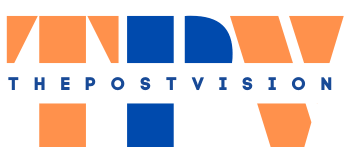Introduction to Lab to Fab Transition
From Lab to Fab means the basic progress ease in semiconductor producing, where imaginative advancements created in research labs are increased for high-volume creation in manufacturing offices. This thorough aide digs into the complexities of this progress, featuring process control arrangements, metrology procedures, and fab joining methodologies that drive productivity and advancement in the chip business.
Understanding Semiconductor Manufacturing
Semiconductor Manufacturing Process Overview
Semiconductor manufacturing involves a complicated series of moves toward making incorporated circuits (ICs) or chips. These means incorporate plan, wafer manufacture, bundling, and testing, each requiring accuracy and control to guarantee the quality and dependability of the eventual outcome.
Challenges in the Chip Industry
The chip business faces different troubles, including extending interest for faster, more unobtrusive, and more energy-capable devices, as well as the need to lessen expenses and accelerate a valuable open door to-grandstand. Tending to these difficulties requires consistent advancement and enhancement all through the assembling system.
Process Control Solutions for Lab to Fab Transition
R&D Integration
Successful lab to fab change starts with consistent reconciliation of innovative work (Research and development) endeavors into the creation cycle. Close cooperation between Research and development groups and assembling engineers works with the exchange of creative advancements from the lab to the fab, guaranteeing smooth scale-up and execution.
High-Volume Manufacturing (HVM)
Progressing from low-volume prototyping to high-volume producing (HVM) requires strong interaction control answers for keep up with consistency and dependability. High level mechanization frameworks and continuous checking innovations empower fabs to accomplish high throughput while limiting deformities and creation delays.
Metrology Techniques for Quality Assurance
Material Characterization
Exact material portrayal is fundamental for guaranteeing the quality and execution of semiconductor gadgets. Metrology strategies like optical spectroscopy, nuclear power microscopy (AFM), and examining electron microscopy (SEM) give nanoscale goals to breaking down material properties and distinguishing abandons.
Process Optimization
Metrology assumes a vital part in process improvement, permitting fans to screen and control basic boundaries like film thickness, dopant focus, and surface harshness. By executing progressed metrology methods, fabs can upgrade yield, diminish variety, and further develop general creation proficiency.
Fab Integration Strategies
Fab Automation
Mechanization is progressively fundamental in present day fabs to smooth out work processes, limit human mistake, and boost efficiency. From mechanical wafer taking care of frameworks to cutting edge AI calculations, fab robotization advances empower consistent reconciliation of interaction steps and work on in general functional productivity.
Fab Infrastructure Enhancement
Interests in fab foundation are fundamental for supporting the developing requirements of semiconductor producing. Updating cleanroom offices, introducing progressed gear, and executing energy-proficient advancements add to upgrading fab capacities and seriousness in the worldwide market.
Advanced Analytical Techniques for Yield Improvement
AFM-IR Spectroscopy
Nuclear power microscopy-infrared (AFM-IR) spectroscopy is a strong insightful strategy for portraying materials with nanoscale goal. By consolidating AFM with infrared spectroscopy, fabs can dissect substance organization and recognize atomic designs with remarkable precision and awareness.
SIMS Analysis
Optional particle mass spectrometry (SIMS) investigation is one more significant device for semiconductor fabricating, giving definite data on natural arrangement and profundity profiling of materials. SIMS is especially helpful for recognizing the following pollutants and observing dopant dissemination in semiconductor gadgets.
X-ray Inspection for Defect Detection
X-ray Inspection
X-ray review is a non-horrendous testing strategy utilized in semiconductor producing for distinguishing imperfections like voids, breaks, and delaminations. High-goal X-beam imaging frameworks empower fabs to recognize and dissect inside designs of ICs, guaranteeing item quality and dependability.
Strategies for Yield Improvement and Cost Reduction
Yield Improvement
Yield improvement is a basic objective in semiconductor fabricating, as it straightforwardly influences item quality and benefit. By carrying out strong interaction control arrangements, streamlining producing cycles, and utilizing progressed insightful procedures, fabs can upgrade yield and limit scrap, prompting cost reserve funds and upper hands.
Cost Reduction
Cost decrease is a steady concentration in the chip business, driven by the need to stay cutthroat in a worldwide market. Fab incorporation techniques, like computerization, framework upgrade, and store network enhancement, empower fabs to decrease working costs, further develop effectiveness, and boost profit from speculation.
Time-to-Market Acceleration Through Innovation
Accelerating Innovation
Development is the soul of the semiconductor business, driving progressions in innovation and empowering the improvement of cutting edge gadgets. By encouraging a culture of development and cooperation, fabs can speed up opportunity to-showcase new items and keep a strategic advantage in a steadily advancing scene.
Collaboration and Partnerships
Cooperation between fabs, gear providers, and innovation accomplices is fundamental for driving development and tending to industry challenges. By utilizing each other’s aptitude and assets, partners can defeat specialized hindrances, speed up innovation advancement, and make common progress. This cooperative methodology takes into consideration the sharing of information and best works on, prompting more productive critical thinking and the making of state of the art arrangements.
FAQs About Lab to Fab Transition
Q: What is the lab to fab transition in semiconductor manufacturing?
A: The lab to fab change alludes to the most common way of increasing creative advancements created in research labs for high-volume creation in semiconductor manufacture offices.
Q: Why is process control important in semiconductor manufacturing?
A: Cycle control is significant for keeping up with consistency, dependability, and quality in semiconductor producing. It helps fabs screen and control basic boundaries, limit abandons, and advance creation productivity.
Q: What are some advanced metrology techniques used in semiconductor manufacturing?
A: Undeniable level metrology systems consolidate optical spectroscopy, atomic power microscopy (AFM), really looking at electron microscopy (SEM), and discretionary molecule mass spectrometry (SIMS), among others.
Q: How can fabs improve yield and reduce costs?
A: Fabs can further develop yield and diminish costs by executing powerful interaction control arrangements, improving assembling processes, utilizing progressed scientific procedures, and upgrading fab framework and mechanization.
Q: What role does innovation play in semiconductor manufacturing?
A: Development drives innovative headways and empowers the improvement of cutting edge semiconductor gadgets. It is fundamental for keeping up with seriousness, speeding up opportunity to-showcase, and tending to industry challenges.
Conclusion
The excursion from lab to fab is a mind boggling and dynamic cycle that requires consistent incorporation of Research and development endeavors, powerful interaction control arrangements, high level metrology procedures, and key fob combination. By embracing development, cooperation, and persistent improvement, semiconductor fabs can beat industry challenges, upgrade creation effectiveness, and convey top notch items to the market. As the chip business keeps on developing, remaining at the bleeding edge of mechanical progressions and embracing best practices will be vital to making progress and supporting development in a serious scene.
Also Read: thepostvision!


